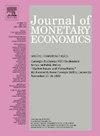产业政策的长期影响
IF 4.3
2区 经济学
Q1 BUSINESS, FINANCE
引用次数: 0
摘要
本文为大规模产业政策——韩国的重化工业(HCI)驱动——对企业长期绩效的影响提供了因果证据,并量化了其长期福利效应。利用企业层面补贴的独特历史数据和自然实验,我们发现这一产业政策产生了巨大而持久的影响。在补贴结束后的30年里,获得补贴的企业比那些从未获得补贴的企业增长得更快。我们建立了一个定量的异质企业模型,通过结合“边做边学”和金融摩擦来合理化这些效应。该模型是校准到企业层面的数据,其关键参数是纪律与计量经济学估计。HCI驱动器带来的收益大于成本。如果没有实施,韩国的福利将会下降3%-4%。总的福利影响大部分来自“边做边学”的长期生产力效益。本文章由计算机程序翻译,如有差异,请以英文原文为准。
The long-term effects of industrial policy
This paper provides causal evidence on the impact of a large-scale industrial policy – South Korea’s Heavy and Chemical Industry (HCI) Drive – on firms’ long-term performance and quantifies its long-term welfare effects. Using unique historical data on the universe of firm-level subsidies and a natural experiment, we find large and persistent effects of this industrial policy. Subsidized firms grew faster than those never subsidized for 30 years after subsidies ended. We build a quantitative heterogeneous firm model that rationalizes these effects through a combination of learning-by-doing and financial frictions. The model is calibrated to firm-level data, and its key parameters are disciplined with the econometric estimates. The HCI Drive generated larger benefits than costs. If it had not been implemented, South Korea’s welfare would have been 3%–4% lower. The majority of the total welfare impact comes from the long-term productivity benefits of learning-by-doing.
求助全文
通过发布文献求助,成功后即可免费获取论文全文。
去求助
来源期刊

Journal of Monetary Economics
Multiple-
CiteScore
7.20
自引率
4.90%
发文量
90
审稿时长
74 days
期刊介绍:
The profession has witnessed over the past twenty years a remarkable expansion of research activities bearing on problems in the broader field of monetary economics. The strong interest in monetary analysis has been increasingly matched in recent years by the growing attention to the working and structure of financial institutions. The role of various institutional arrangements, the consequences of specific changes in banking structure and the welfare aspects of structural policies have attracted an increasing interest in the profession. There has also been a growing attention to the operation of credit markets and to various aspects in the behavior of rates of return on assets. The Journal of Monetary Economics provides a specialized forum for the publication of this research.
 求助内容:
求助内容: 应助结果提醒方式:
应助结果提醒方式:


